Quantum Information
As this year's focus of the YPF event lies upon quantum information, we invite you to join us in Basel to learn more about how this type of information differs from classical information.
Being the event in Basel we could not miss the chance to visit the Bernoulli-Euler museum.
This year we counted with the presence of leading scientist and researchers that inspired and filled with motivation physics students from all over Switzerland, here you can find a description of the talks held at the forum.
Bell non-locality
By Dr. Jean-Daniel Bancal
Since the inception of quantum theory, several of its counter-intuitive predictions have led researchers to question the consistency of the theory itself. More than fifty years ago, J. S. Bell showed that some of the strange phenomenons in which Quantum Theory is based had much more profound consequences than first anticipated.
This result caused a reexamination of basic principles which turned out to shed new lights on a variety of subjects in the field, such as randomness or the necessity to describe quantum systems accurately. The main and most famous phenomenon was the Einstein-Podolsky-Rosen (EPR) paradox which introduced in 1935, the concept now known as quantum entanglement.
In this talk after a quick overview, we have seen how re-examining fundamental results on quantum theory have led to some of mayor developments and ultimately have open the way for new quantum technologies.

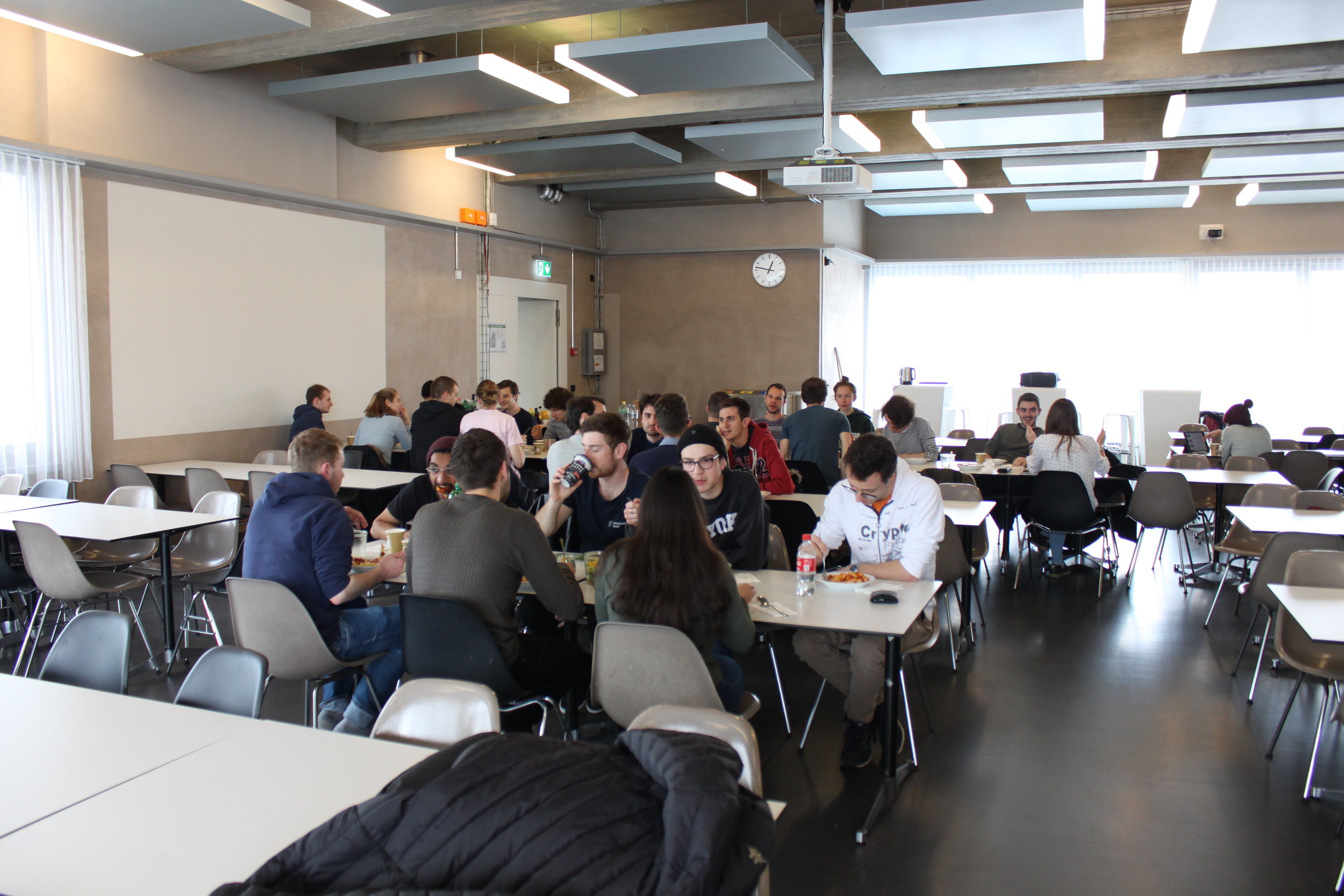

Einstein-Podolsky-Rosen paradox
by Prof. Philip Treutlein
Traditionally, the EPR paradox is presented considering the quantum entanglement of two particles, but in principle nothing prevents the entanglement of many body systems. In his talk, Prof. Treutlein showed us how using advanced techniques, including magnetic traps for atoms, precise laser spectroscopy and ultra cold atoms, one can actually create such entangled system and prove that it displays correlations beyond what classical physics allows.




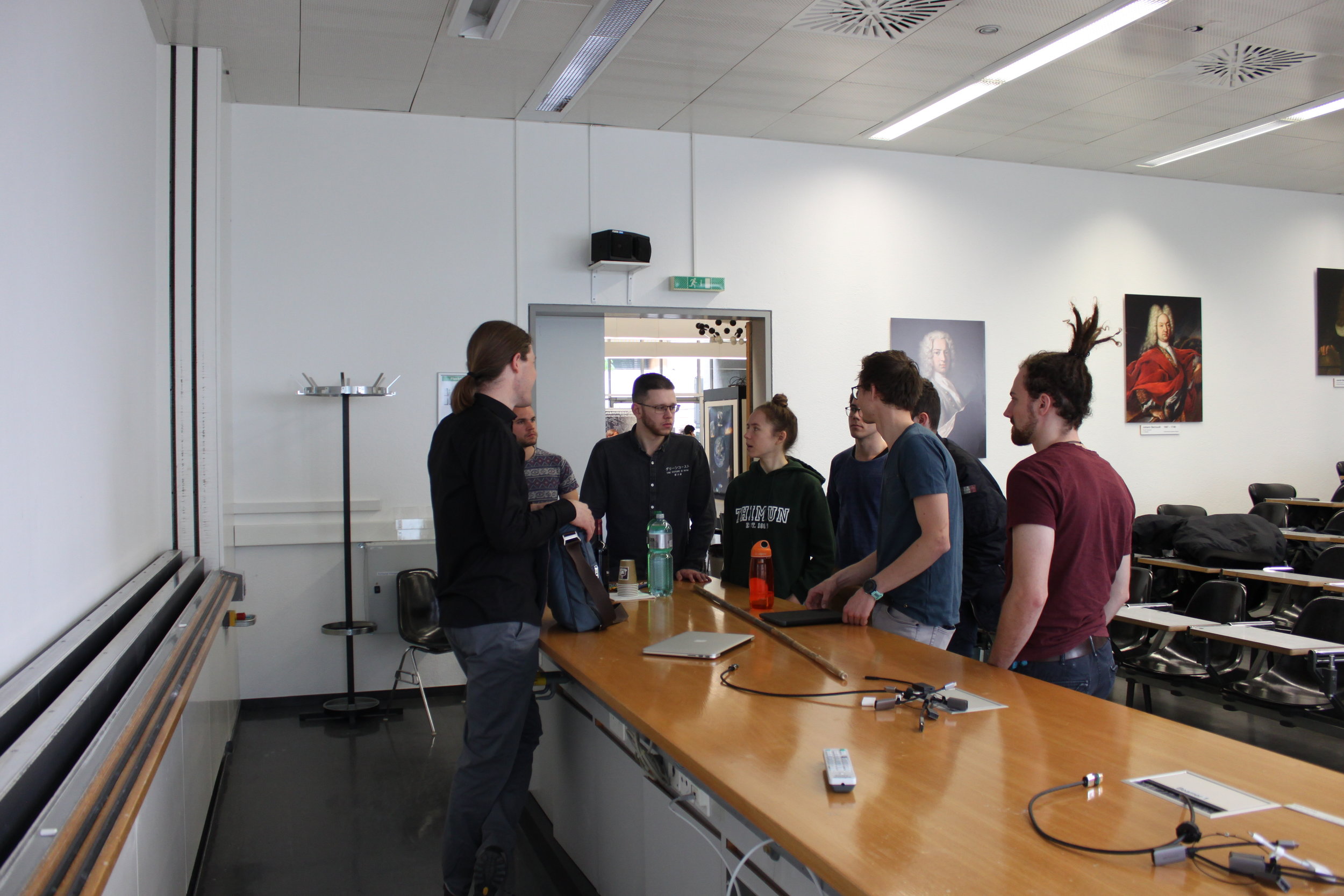


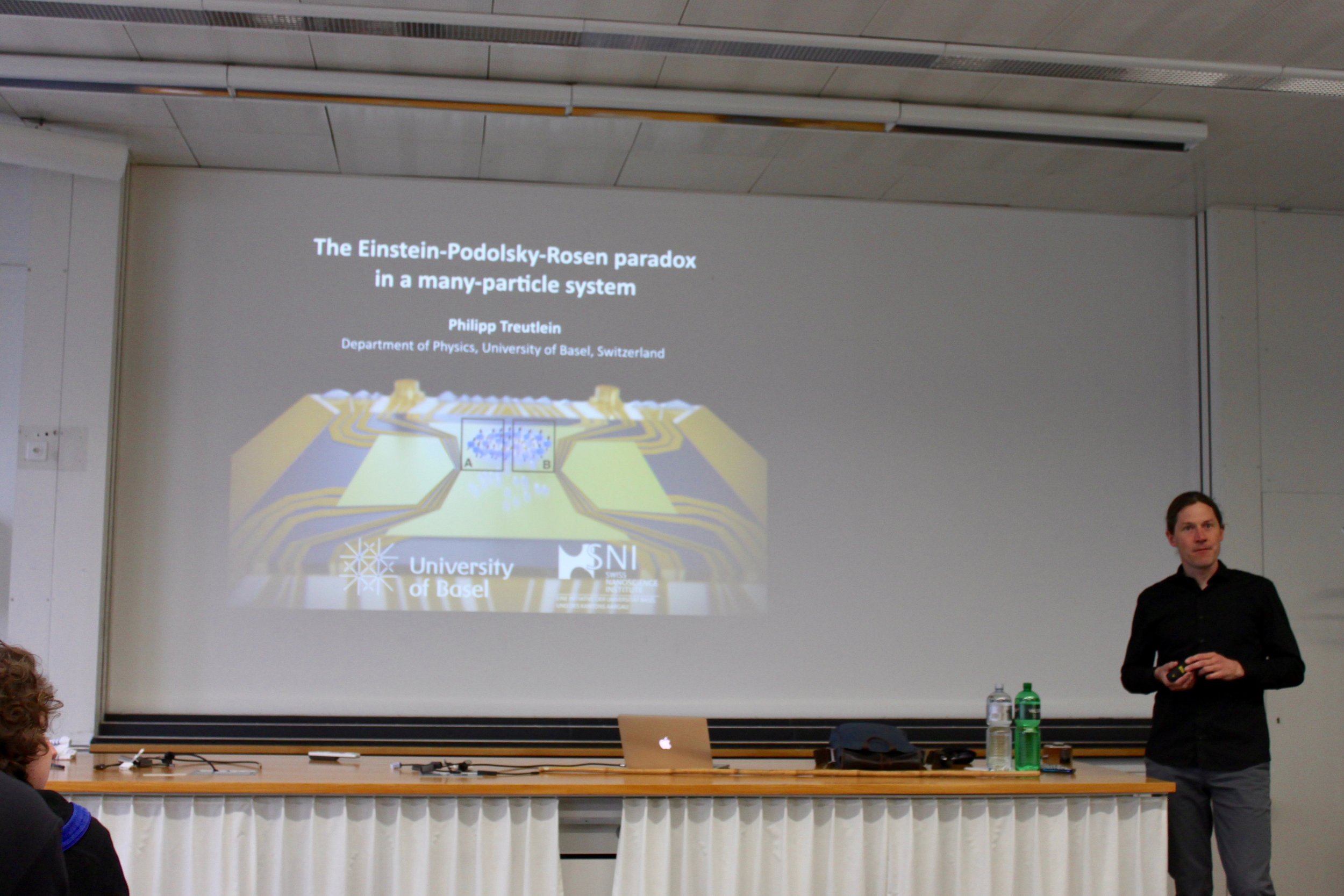



Spins and their Orbits in Semiconductor Quantum Dots
by Prof. Dominik Zumbühl
Prof. Dominik Zumbühl offered us a wide review of the current state of quantum information research. Rather than focusing solely on the subjects being explored today, he also gave us a glimpse of more technical aspect: financing of the research, corporations and start-ups active in the field and possible technologies invented for the research that could be, or already are, commercialized.
Prof. Zumbühl also presented us the different research topics he and his group are currently investigating, including the creation of single electron qubit, that a single isolated electron which spin can be controlled and read.




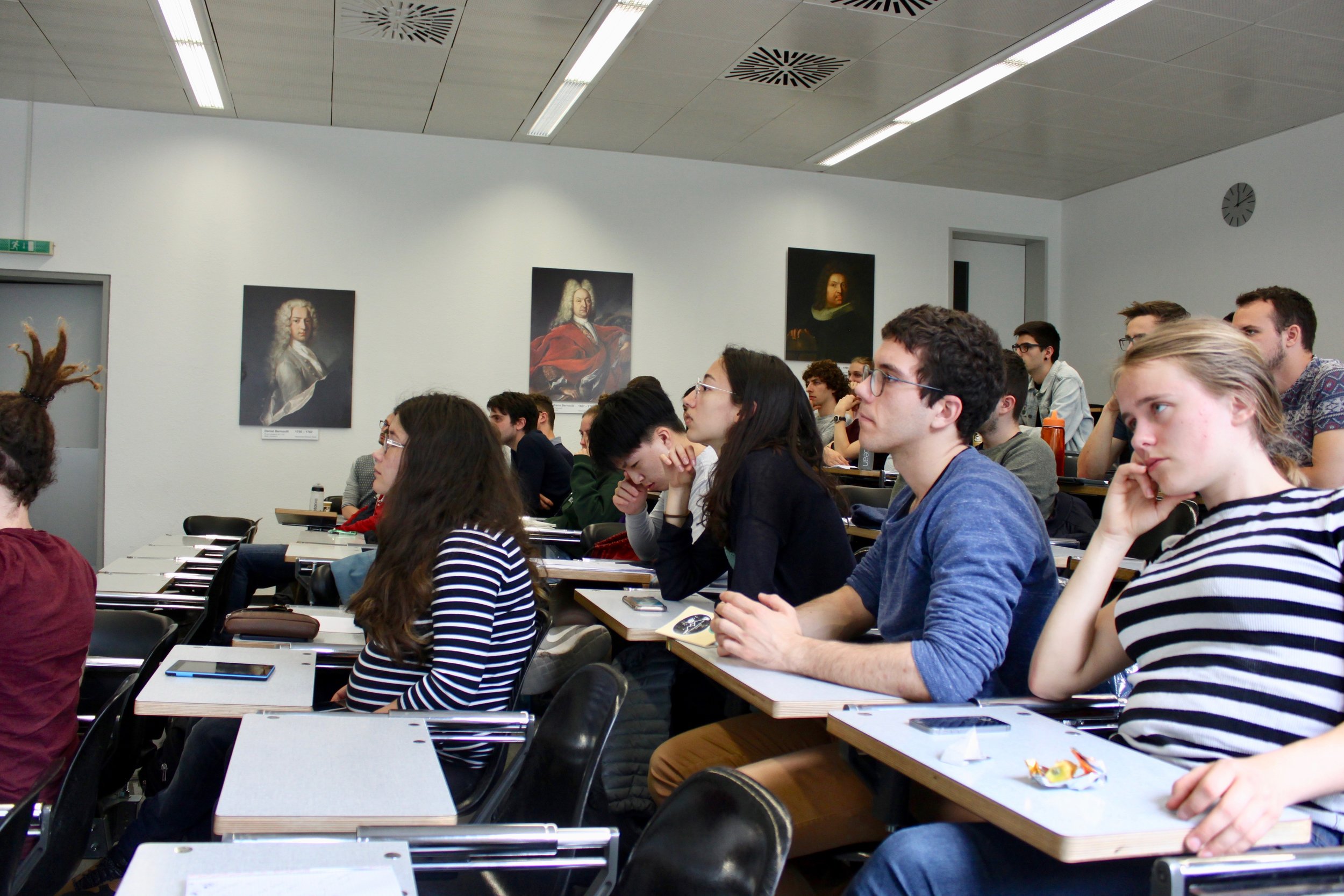


Visit to Quantum Information Laboratories of Basel University
We visited the lab where the creation of single electron qbit, and other research are developed. We were presented more concretely what are the devices needed to achieve such an incredible level of control of a qbit.
For example, on of the topic discussed during the talk of Prof. Zumbühl, how can they achieve and maintain micro Kelvin temperature on relatively big objects, as higher temperature would give the trapped electron enough energy to flip spin or escape its trap, implying a total loss of control over it.
We also saw Prof. Treutlein laboratory of Quantum optics, where we learned about quantum metrology.











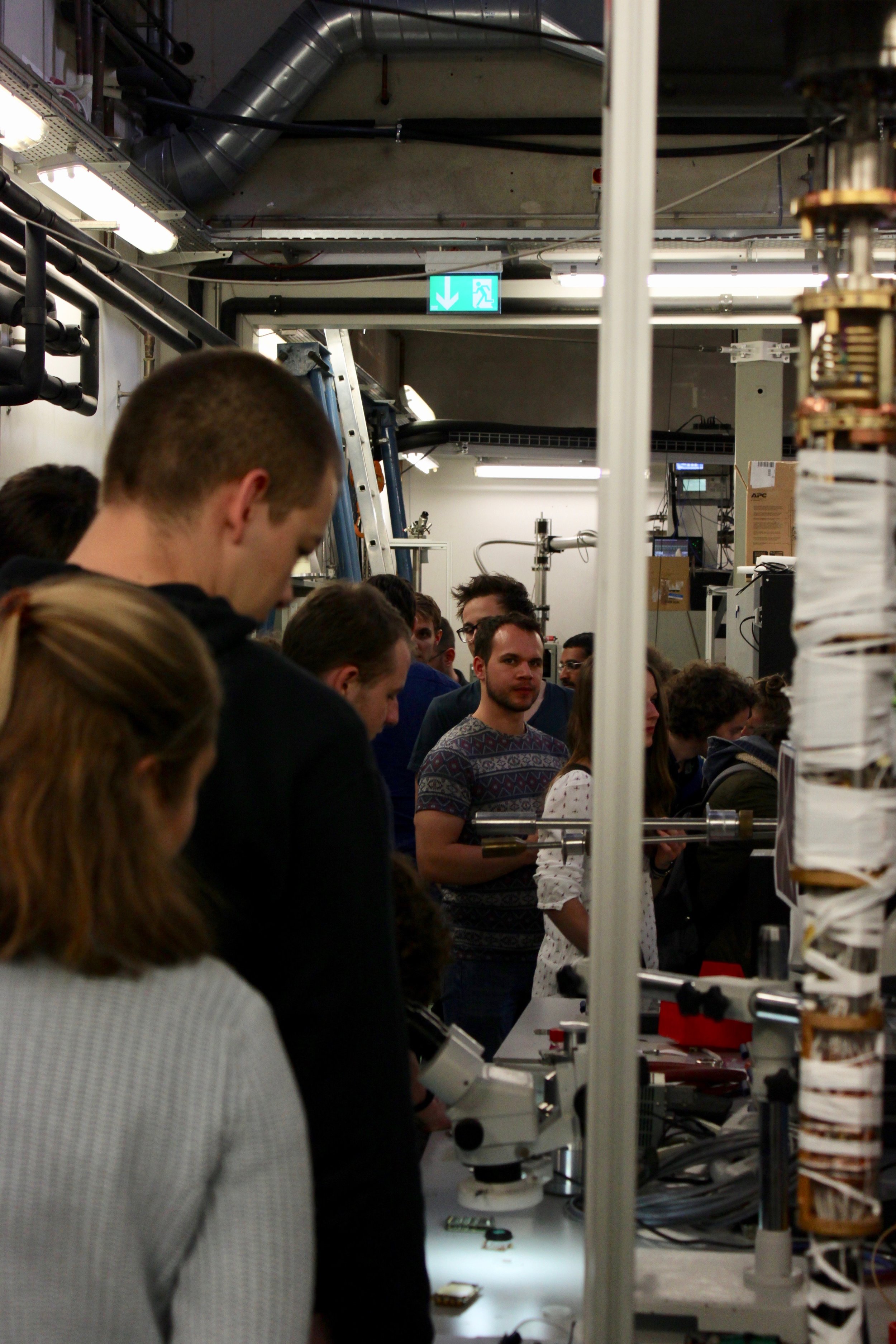





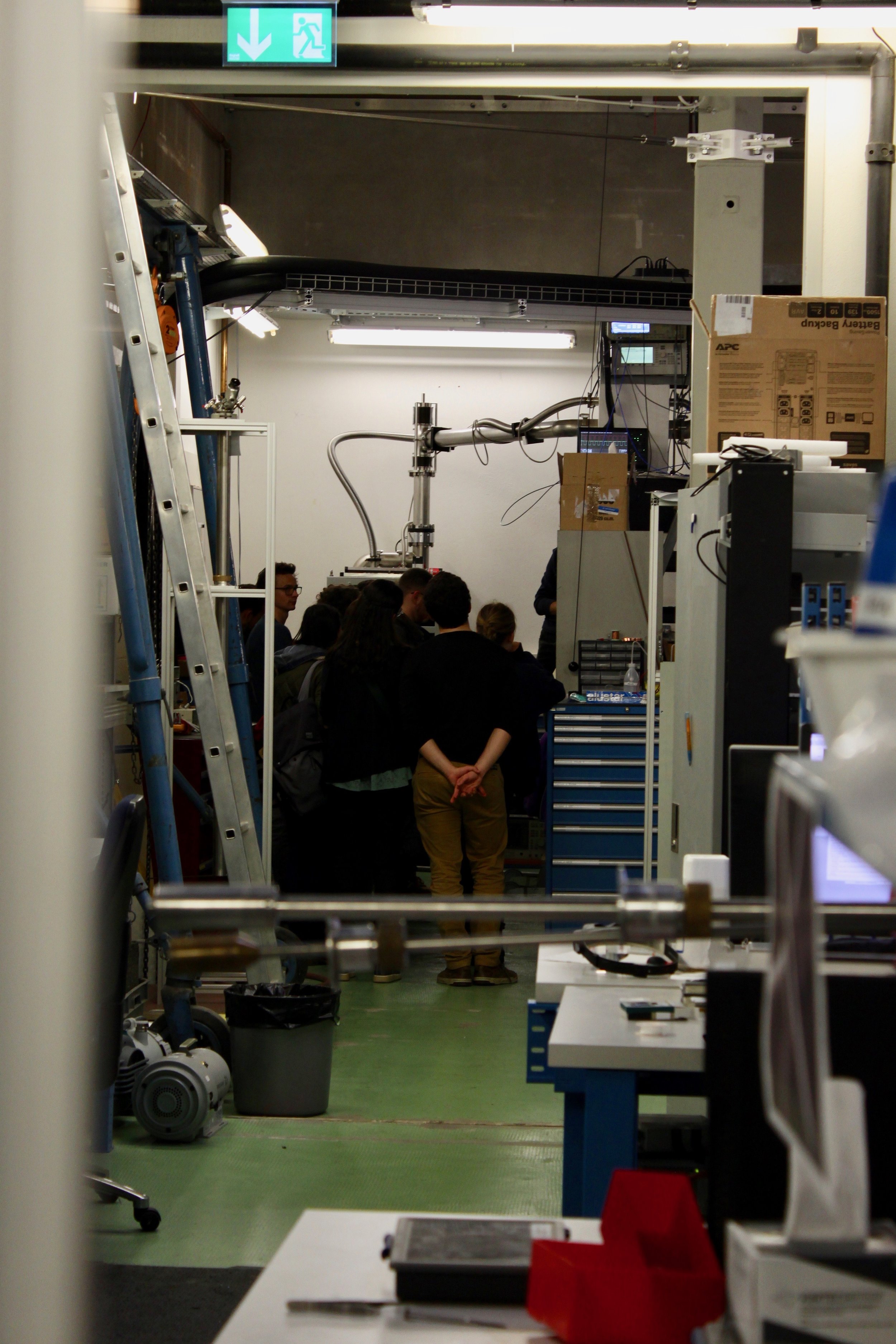
Quantum Structures in Nanowires for Quantum Communication
by Dr. Marta De Luca
The research of Dr. Marta De Luca, focus on developing nanowires for the usage in quantum cryptography. To develop this technology in practice, single photon sources are needed. Faint laser pulses, single atoms or single molecules can be used as sources.
Dr. Marta De Luca told us about quantum dots, which nowadays are the smallest quantum structures that can produce single photons. Quantum dots placed into the filament crystal of nanowires, can produce single photons more efficiently and with the least absorbance in the surrounding material. Many new technologies, such as biological sensors, optoelectronics and thermo-electric materials use nanowires combined with quantum dots.





Topological Quantum Computing
by Prof. Jelena Klinovaja
The talk was focused on condensed matter theory and quantum computing. Prof. Klinovaja also shared with us all the rewards and challenges she has faced since she started working in the field 9 years ago. Today with more than 80 publications, she has received several awards and has become a well-known scientist.
Prof. Klinovaja gave us insight in the latest topics and questions regarding quantum computing. Her current research focused on the topological effects and spin phenomena in quantum theory of condensed matter systems. Her group is researching the insulators and their properties in different physical systems. I.e. in non-uniform magnetic fields and superconductivity.









Quantum Information Theoretic Paradoxes
By Prof. Renato Renner
Can quantum mechanics be used to describe a physicist who herself uses quantum mechanics? Clearly, if quantum mechanics were a universally valid physical theory, the answer should be yes.
In this talk Prof. Renner presents us with the most relevant consistency contradiction in quantum mechanics, from the Black-hole paradox, to the Frauchiger-Renner paradox. In this last one, he proposed a Gedankenexperiment to investigate the question whether quantum theory can, in principle, have universal validity. The idea is that, if the answer was yes, it must be possible to employ quantum theory to model complex systems that include agents who are themselves using quantum theory. Analysing the experiment under this presumption, we find that one agent, upon observing a particular measurement outcome, must conclude that another agent has predicted the opposite outcome with certainty. The agents’ conclusions, although all derived within quantum theory, are thus inconsistent. This indicates that quantum theory cannot be extrapolated to complex systems, at least not in a straightforward manner.
As it happens most of the time in physics, some cats were added to the discussion.








Computational Condensed Matter Theory
BY Prof. José A. Flores Livas
The interactive talk of Prof. Flores had in mind introducing us to computational condensed matter theory research. The first part was focused on the importance of efficient algorithm methods; the main part of Prof. Flores work is done with supercomputers, but given the computer power needed to simulate the structure of materials, cheap and efficient computer algorithms are essential.
Since new approaches are always welcome in this area of research, Prof. Flores encourage the participants to brainstorm about the problems he is facing in his own research, he believes that usually young students who are just starting in the field, do not have any prejudices, leading sometimes to interesting new ideas.
The second part of the talk was focused on quantum materials and its applications. Material structures can be really difficult to be visualized, so his research group started to develop programs for doing so, using virtual reality. We had the pleasure to observed some of these methods directly in a demo using VR glasses during the breaks.
In the last minutes of his talk he told us about how his love for science took him from living in a very small and humble village in Mexico to becoming a well known young scientist, how he handled it to travel around the world to pursue his research. This presentation was one of his last actions at the University of Basel, he now has moved to Italy as an Assistant Professor in the Department of Physics at the Sapienza University of Rome.












Pictures © 2019 Johannes Wüthrich

